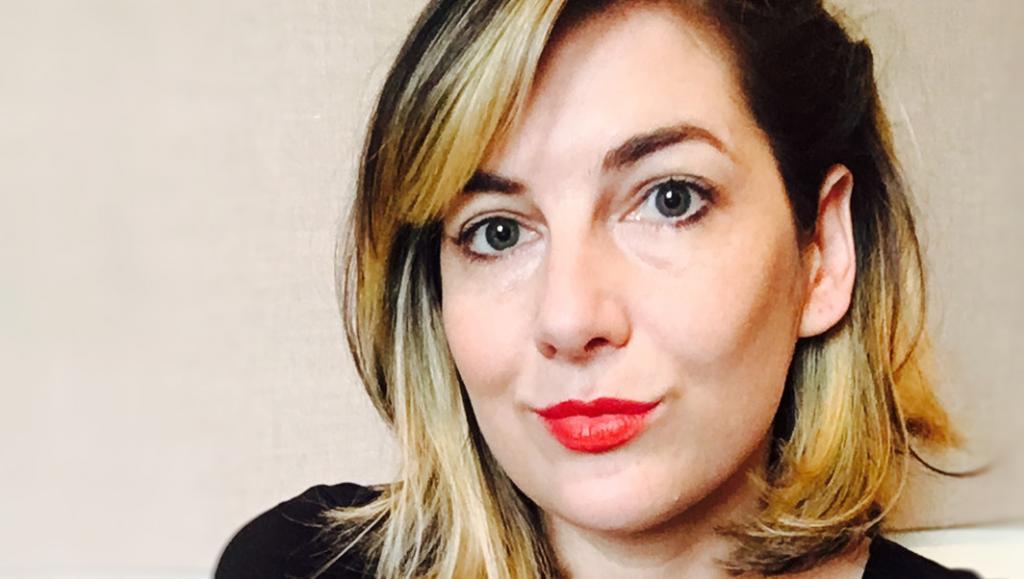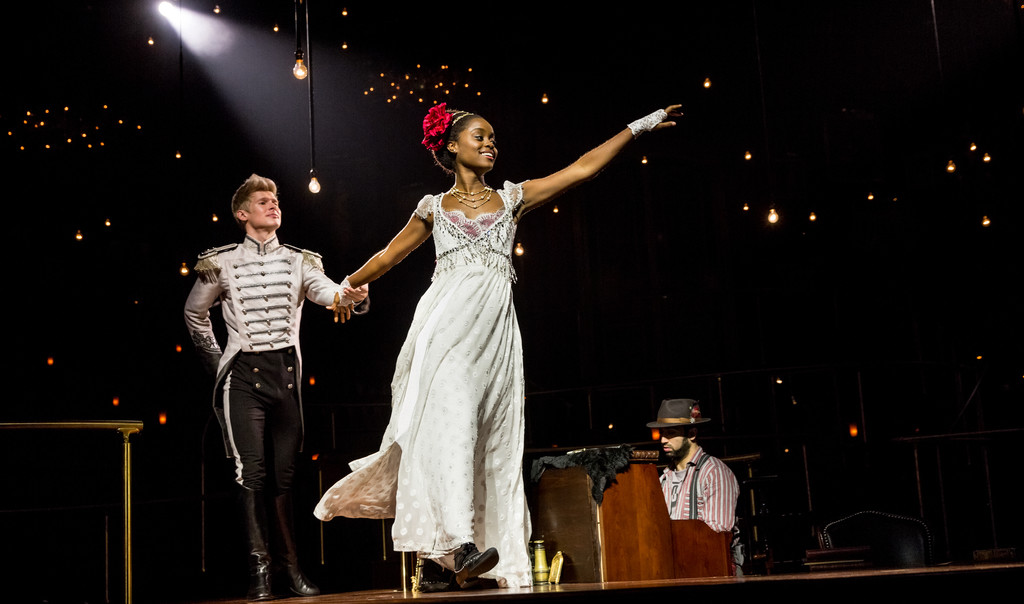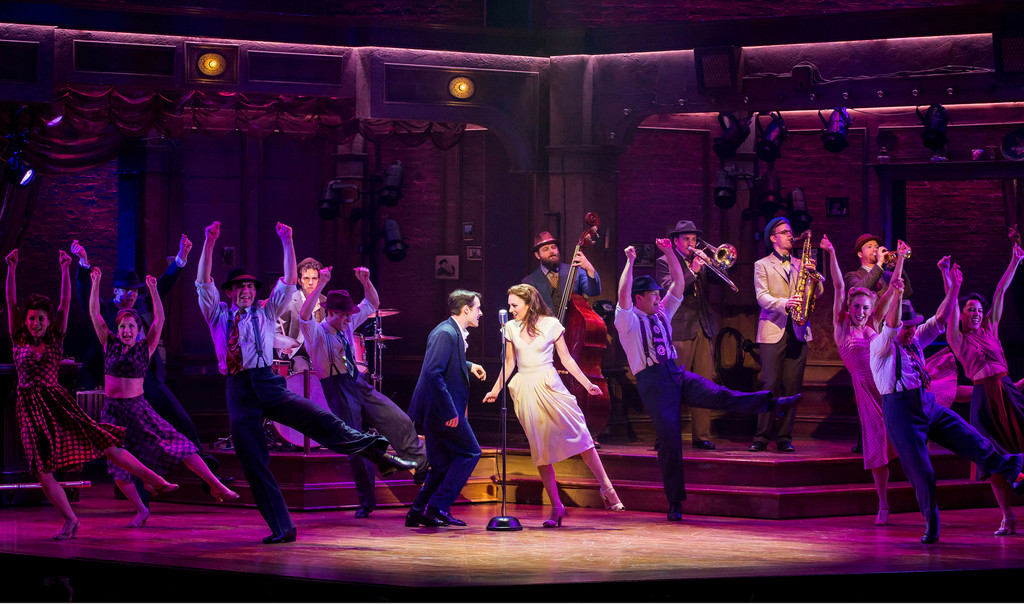Pop Culturalist Chats with Paloma Young

As the saying goes, “Clothes make the man.” Indeed, the clothes worn by an actor or actress onstage are a key part of bringing a character—and their story—to life. That’s where Paloma Young comes in. As a costume designer, she is able to to convey stories through her designs, how it is worn, and how it reflects a character.
Young garnered a lot of attention when she won the Tony Award for Best Costume Design in a Play for her work on the fantastically magical show Peter and the Starcatcher. Once again, her work has been recognized by the theater community; she is nominated for a Tony this year for Best Costume Design in a Musical for Natasha, Pierre and the Great Comet of 1812. And, if that weren’t impressive enough, Young also did the costumes for Bandstand, also currently on Broadway. From the Imperial Russia to post-World War II America, her designs are detailed, thoughtful, and, of course, beautiful.
Pop Culturalist was eager to chat with Paloma Young about her design process, her style, and working in vastly different time periods.
PC: Let’s start off with how you got into costume design. Was there a specific moment when you knew that is what you wanted to do?
Paloma: I think it was something that really was always of interest to me. I would notice the costumes in movies, and I would design my own Halloween costumes. But, I didn’t think I was going to be a costume designer until I got to college. I took some classes for fun; I was a history major. I thought I would be an academic or a librarian, and, then, after college I realized how much I missed the thing that I had just been doing for fun. So, I decided to go to grad school so I could study it a little bit more and went from there.
PC: Since you have that background in history which uses research a lot, do you find you spend a lot of time researching before you design?
Paloma: Yeah, I do a ton of research. What’s changed since I was in college is that so much research has moved online, and it’s a little more dubious. There’s a lot of things online that say, “1942,” and I look at it, and I know it’s from the 60s. You can say anything on the internet, and someone’s going to think it’s true. So, you have to be a little bit more careful. A lot of libraries have sent away all of their pectoral stuff into storage. You [also] have places like the New York Public Library that is working on scanning their whole collection and putting it online. I don’t really spend much time in libraries anymore because they’ve moved all of the books out of libraries, but I do extensive research. I feel like I have a slight leg up there on someone who was maybe a theater major.
PC: So, how much time do you spend on it? Does it vary from project to project?
Paloma: It definitely does. I would think that I would do…on any project—even if it was modern dress—I would say I do a solid 2-3 days of just research. Some of that is visual research, color research, detail research; some of it’s shopping research…like, “Is this something I’ll be able to buy if I show it to the director?” If it’s a much larger project, I would have more like a week of research in there.
PC: There are a couple of different time periods represented in The Great Comet. Can you talk a little bit about why there’s the differences in the time periods, and what inspired you to do that?
Paloma: We wanted our principles—our leads—to be grounded in what people expect out of a show based on War and Peace, and, so, to the untrained eye those costumes should feel very of 1812. Even those costumes [though] I was riffing off of Mimi Lien’s designed set. It has these amazing mid-century chandeliers that look like comets and these red banquets, and it feels very 1959, 1963. It has just sort of a very mid-20th century vibe to that even though it also mixed in with this luxurious Imperial Russia. So there’s a 1960s influence in those period costumes as well—the lines are a little bit cleaner and the fabrics are..well, the men’s uniforms are made out of sharkskin fabric. They’re kind of like the Rat Pack Russian soldiers. Then we move into the ensemble. We wanted them to be a bridge into the audience because the audience is all around. You’re watching the show; you’re watching the characters, but you’re also seeing other audience members sitting behind them. I can’t control what the audience is wearing, but it’s most likely going to be within a certain range of contemporary clothing. So, [we wanted] the ensemble to feel like this wild and emotional expression of angsty-ness that is going on inside of Pierre’s head and this desire to be rebellious that’s going on inside of Natasha’s head. It organically took on this very punk-rock vibe, but they’re also a little bit Russian folk. Then they’re also made out of contemporary pieces so that they felt like they had a connection with the people in the audience.
PC: Do you have a favorite costume from Great Comet?
Paloma: I mean, there are so many good costumes in this show. We keep adding them because we keep expanding our swings—which are the people who could go on for any of the ensemble.
PC: That’s fascinating. Does that usually happen in shows where you add new costumes during the run?
Paloma: I think that it’s just a matter of how sick everyone is getting, or if someone is leaving the show, and they’re getting replaced by someone else who doesn’t fit in the costumes. What’s unique about Great Comet is this…You know, across the street is Bandstand. If someone left the show, we would get a new swing in their place, and we would be able to fit all of those costumes onto the new person, more or less. They would be within a certain size range because they are dancers. The clothes are made more for the characters and the scenes; whereas in Great Comet, I build the costume around the personality of the dancer. The ensemble is cast [from] a much wider net than a usual ensemble. We have musicians of all shapes, sizes, colors, and even genders. If a woman is injured, but there’s no other female available to go on for her part, we have a man go on for her part. So, there’s a lot of gender fluidity in our ensemble. I get the ensemble member into a fitting and pick out things that feel like they are of that person’s vibe. We had a vacation swing come in, and I tried on a couple of things for the duel—which is our ravey club scene. We had some pleather pants, but nothing was really feeling right. I realized that he had this very Freddie Mercury vibe so I went online and ordered some crazy suit with a cutout to the kneehole that was fluorescent green. So that was something that was inspired by the actor themselves, as opposed to me starting with a design and putting it on an actor.
PC: So, circling back. What’s your favorite costume in the show? Or your favorite character to dress?
Paloma: Well, I think that Helene is a delicious character to dress. But, you know, I’m going to jump back. That is a fun character to dress, but I realize I do have a favorite costume. My favorite costume is Princess Mary’s costume. It’s this over-sized blue-ish-blackish brocade jumper over a high-neck, puffy-sleeved blouse. The jumper is based on this 19th century religious sect called the Old Believers. The actual character of Princess Mary—although she’s very religious—was not part of that particular sect. I was looking for something that felt clerical or aesthetic; she’s trying to be simple. I just love the shape of it. I feel like of any of the clothes, that [one] you could wear on a runway. It would feel oddly high fashion even though she’s supposed to be the plain one.
PC: Compared to Great Comet, the costumes for Bandstand are uniformly evocative of one specific time period. Does that make it an easier kind of show to design for since you are constrained to one time period?
Paloma: The particular constraints of the show are what make that show special. It is its own being. So, I’m not stuck in 1945 and wishing that I could jump over to 1957 or whatever. [1945] is what this particular show is, so I’m designing within that world. Even within that world there’s always…the show is always going to look at the period through a particular lens. This is live theater; people need to move around. We have incredible choreography in Bandstand and sometimes what is the most period, [is not going to] highlight the choreography that Andy Blankenbuehler has created. Sometimes, it’s just dangerous [laughs]. You have to tweak the period in a way that doesn’t feel like you’ve jumped into a totally different time, but that will let you see the poetic story being told. It’s not a BBC period living room drama.
PC: Do you bring your own personal style/touch to all of your designs?
Paloma: I think it’s just a matter of taste. It’s just who I am. Sometimes I have assistants that are making decisions for me if I have a large project, and I can’t oversee every little thing. I try to hire people that have similar aesthetics to me, but, even then, I’m always coming and being like, “Oh I hate shoulder pads,” or “Those shoes are totally wrong. They need to be pointed and not round-toed.” I’m always going to be editing anything that is going into the show based on what my taste is. I think that shapes whatever my particular style is.
PC: Is there a story or show that you have read or seen that you’d like to tackle? Either a book, or a revival or remake?
Paloma: I feel like my answer that I would give you is very obscure. There’s a novel called The King. It’s a Donald Barthelme novel. It’s something I could see being costumed, puppeted, and containing a lot of different periods. There’s a lot of dark humor in it so it’s funny, and it’s a little bit gothy which is some part of my childhood that I can’t shake off. And, it’s political. So, that’s always been something that has been at the back of my bookshelf of like, “Can this ever be a show someday?”
POPCULTURALIST SPEED ROUND
Guilty pleasure TV show or movie
I don’t believe in guilty pleasures. I think that people should have more respect for shows—especially shows about women, which I think get put into the guilty pleasure category. That being said, I think Jane the Virgin is an amazing show.
Favorite book
Life, A User’s Manual
Favorite play or musical
I really like Beckett. All of them! [laughs]
Karaoke or shower song
I’m a terrible singer so I don’t karaoke. I suppose in the shower…I have no idea. I avoid singing at all costs.
Ok, so what’s one song you could listen to over and over?
Recently, I’ve listened to a lot of Justin Bieber’s “Sorry.”
Photo Credits: The Great Comet – Chad Batka / Bandstand – Jeremy Daniel





Discussion about this post